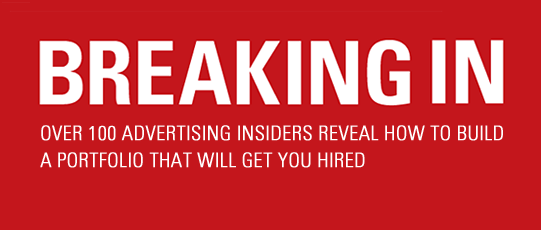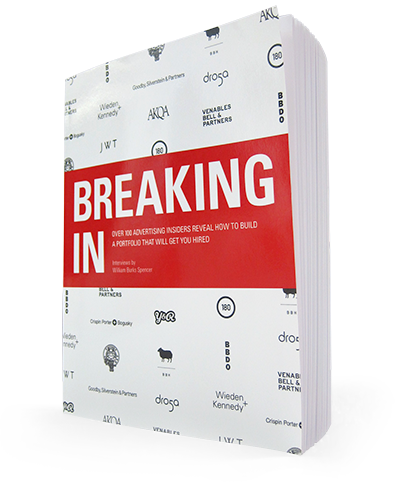WS:What do you look for in a student book? And what impresses you?
RC:I look for variety and unique projects. Variety in the kinds of campaigns they work on. Not the typical student clients: Snowboards, movie festivals, etc. Somebody who has taken a fairly unique product or service and done something kind of cool with it. And, on top of it, something that’s not your traditional three-spread ads, three-spread ads, three-spread ads, because that’s really completely unrealistic. I mean, even our most senior teams here never work on three-spread ads. It’s very unusual. What have they done with some interesting fractionals, newspaper, guerrilla postings, websites, anything like that, that’s just a little different that approaches advertising in a unique manner other than the super-traditional print. Because, if you can come up with something really unique, I’m assuming, you can probably do a great print ad too.
WS:What do you think about sketches versus finished work?
RC:Well, unfortunately, I think the bar has been raised. I think that part of the reality of working in an ad agency these days is that art directors and copywriters know their way around Photoshop, Illustrator, InDesign, and I think it tends to come across a little bit unfinished and lazy, to be honest with you, if somebody hasn’t taken the time to put together a decent layout with maybe stock art or somewhat finished art and a finished layout. Some thought about typography. It’s too amateur coming in to an agency with just sketch books. It’s about the idea but it’s actually also the execution.
WS:What do you think about long copy? Is it necessary for a writer to have that?
RC:Well, I personally think it is. I think that one of the most difficult things to find is a copywriter who can do radio, for instance. If I find a radio writer, that to me is like gold because that’s writing in its most pure form. It’s usually uninterrupted by a lot of different production hands, and directors, and producers, and creative directors, and so if somebody can do radio that’s always terrific in my mind.
I think that visually oriented campaigns are really important and strong, but at the end of the day, sometimes you’re going to have to write for the agency and maybe it involves long copy. If you look at the Saturn ads that we’ve done recently, it’s an entire paragraph or two of nothing but copy and you might have to do something like that at an agency as a copywriter. So I personally like to see a couple of examples of long copy in a book.
WS:What do you think about including things that aren’t ads?
RC:That is something that I’m really big on because, even if they’ve gone to portfolio schools, sometimes student books are a little generic and they don’t really tell me much about the person. Also, I think students make the mistake of not making their résumé part of the whole package. Sometimes people have a really corporate-looking résumé even though they are a creative person who has been in the business zero years. And I always tell them, “I don’t like to see a big, corporate résumé. Use this opportunity to do something cool and tell me about you.” And then, when I pull that out of them, they say, “Well, I am an artist” or, “I’m a photographer and I’ve got a website too.” Put that in your presentation somehow. You don’t have to show me everything that you’ve done, but I think sprinkling a traditional creative portfolio for advertising with your passion, whether it’s photography, or copywriting, or poetry, or painting, I think it makes you a more well-rounded human being and sort of a student of art and culture and not just some robot that does nothing but advertising.


Comments are closed.